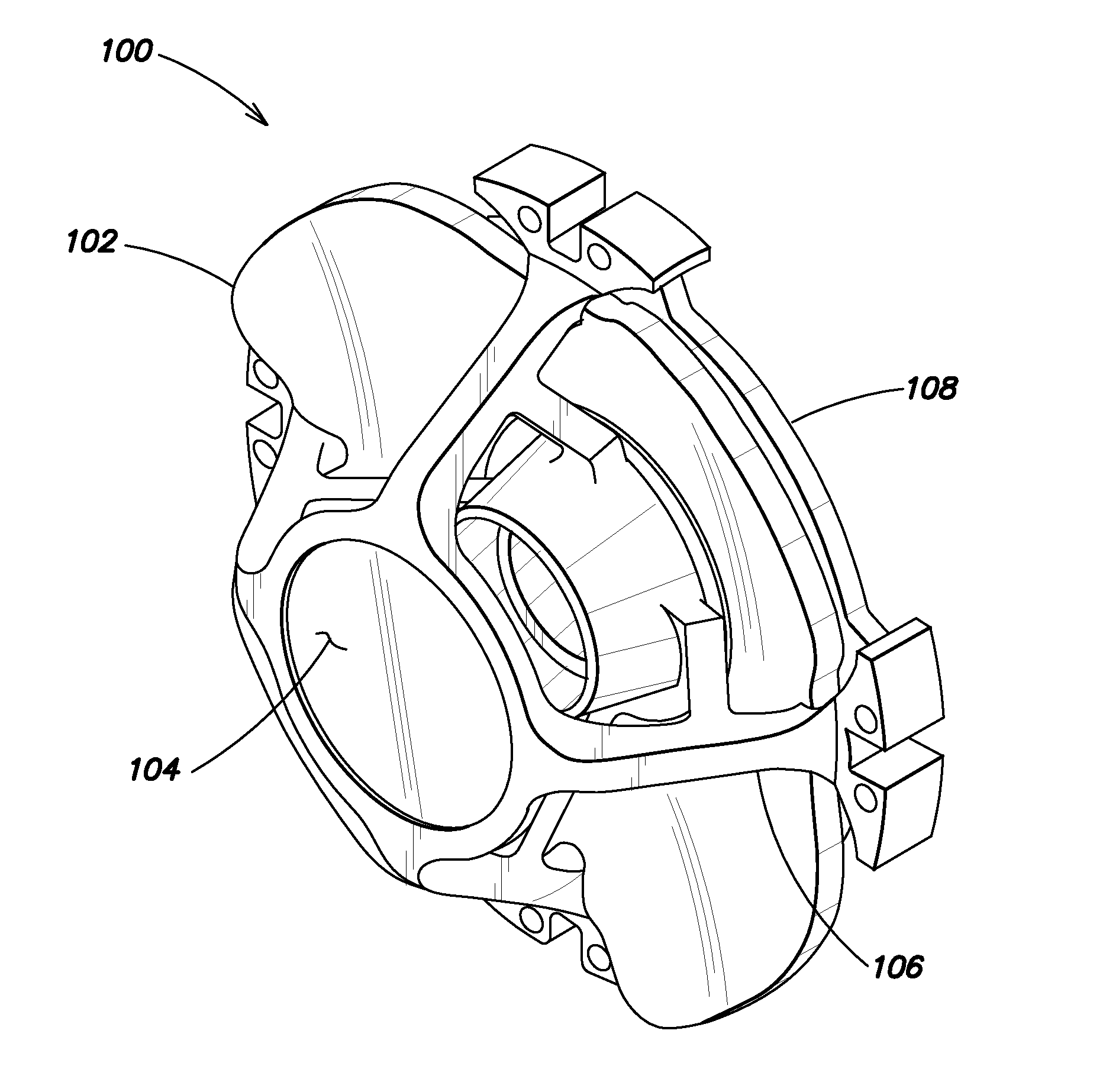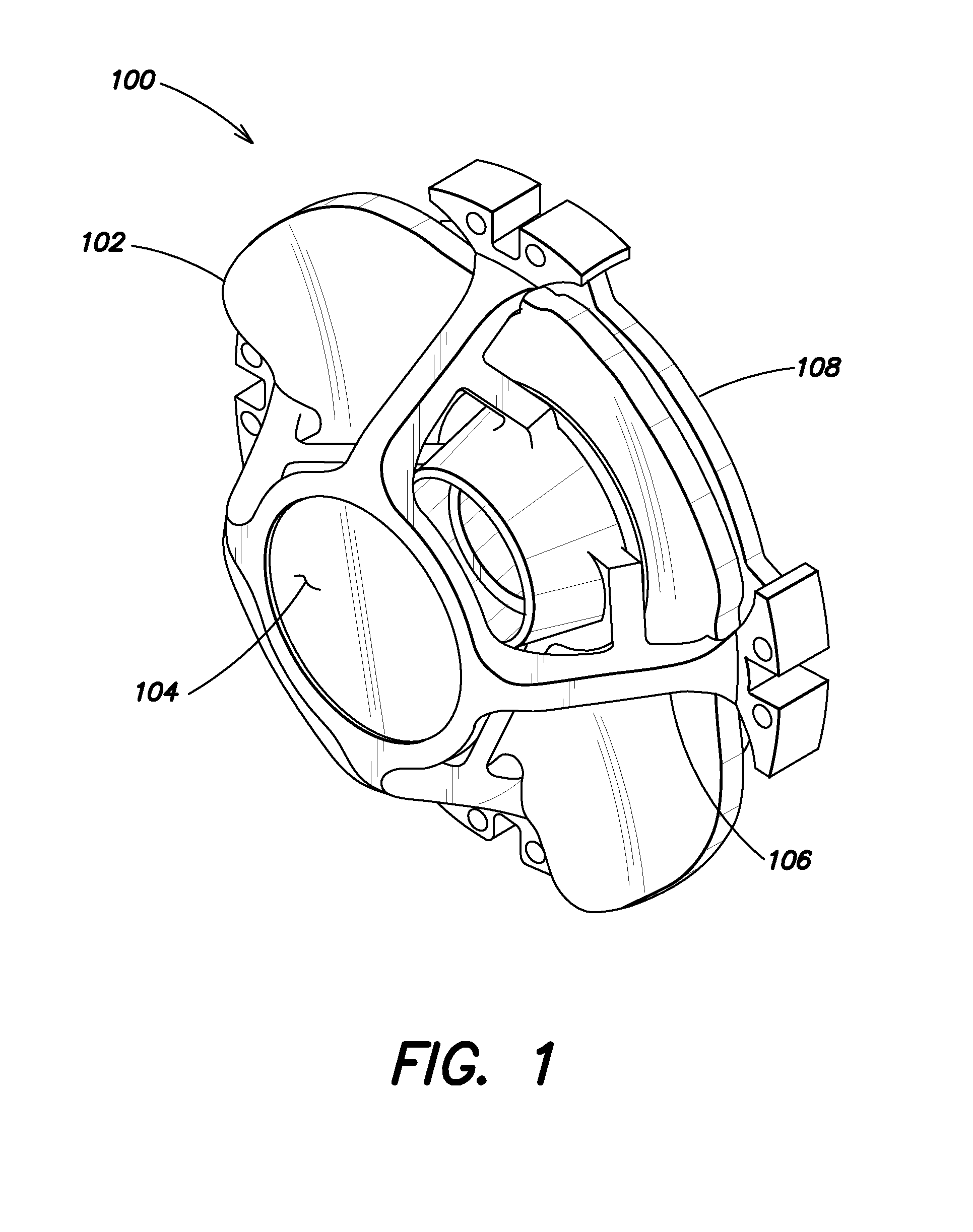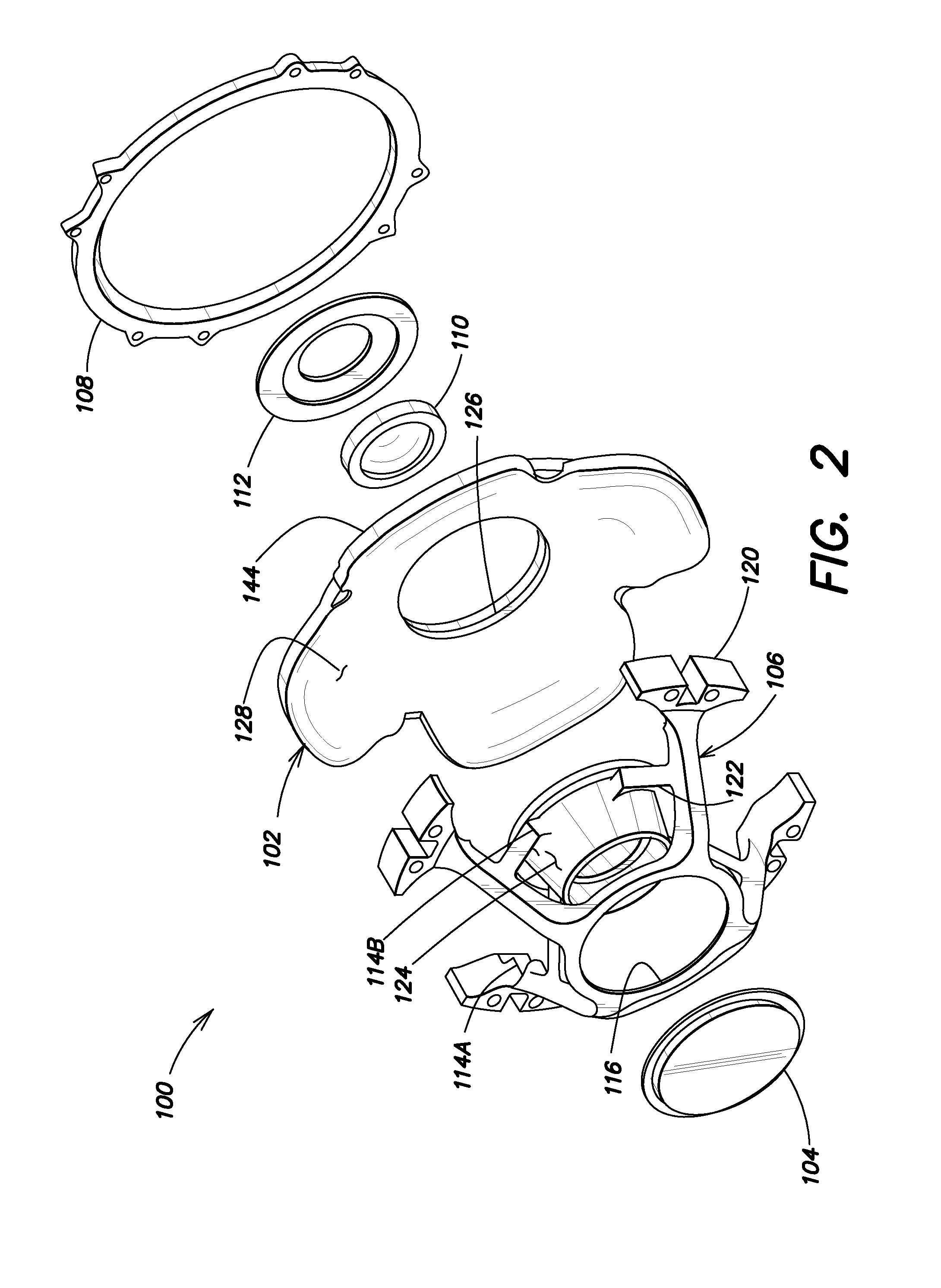Bi-polymer infrared optics for high-g applications
a high-g, infrared optics technology, applied in the direction of optical elements, instruments, manufacturing tools, etc., can solve the problems of insufficient light weight, insufficient cost, and insufficient cost, so as to achieve high moldability, reduce cost, and reduce cost
- Summary
- Abstract
- Description
- Claims
- Application Information
AI Technical Summary
Benefits of technology
Problems solved by technology
Method used
Image
Examples
Embodiment Construction
[0029]Aspects and embodiments are directed to providing a low cost and low mass optical apparatus that can survive high acceleration while maintaining optical performance at varying temperatures.
[0030]According to certain embodiments, low cost and low mass are achieved by using inexpensive moldable polymer materials for the optics and for the structural components used in embodiments of the optical apparatus. In some embodiments, the optical apparatus is arranged in a cassegrain or catadioptric optics configuration.
[0031]According to certain aspects, quality of the optics and high G (acceleration) survival of the polymer optical apparatus are simultaneously achieved by segregating the optical and structural functions within embodiments of the optical apparatus. This segregation enables construction of a bi-polymer optical apparatus wherein each of the optics and the structural components are molded from different polymers. For example, in one embodiment, the minors are molded from u...
PUM
| Property | Measurement | Unit |
|---|---|---|
| tensile strength | aaaaa | aaaaa |
| tensile strength | aaaaa | aaaaa |
| tensile strength | aaaaa | aaaaa |
Abstract
Description
Claims
Application Information
 Login to View More
Login to View More - R&D
- Intellectual Property
- Life Sciences
- Materials
- Tech Scout
- Unparalleled Data Quality
- Higher Quality Content
- 60% Fewer Hallucinations
Browse by: Latest US Patents, China's latest patents, Technical Efficacy Thesaurus, Application Domain, Technology Topic, Popular Technical Reports.
© 2025 PatSnap. All rights reserved.Legal|Privacy policy|Modern Slavery Act Transparency Statement|Sitemap|About US| Contact US: help@patsnap.com



